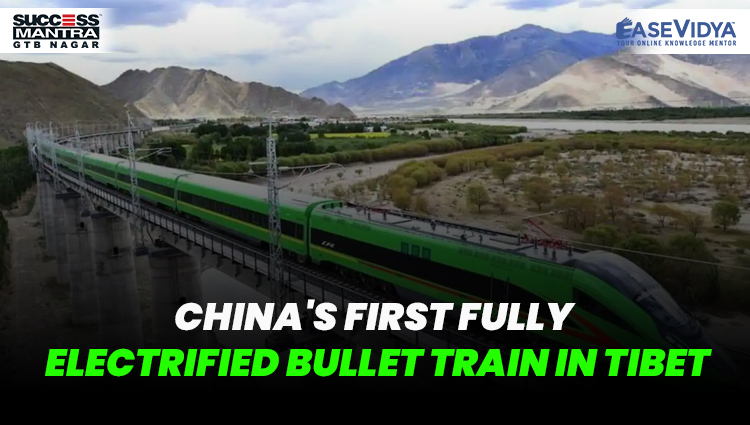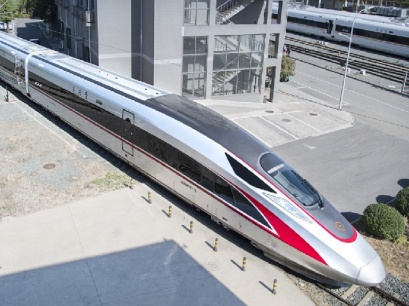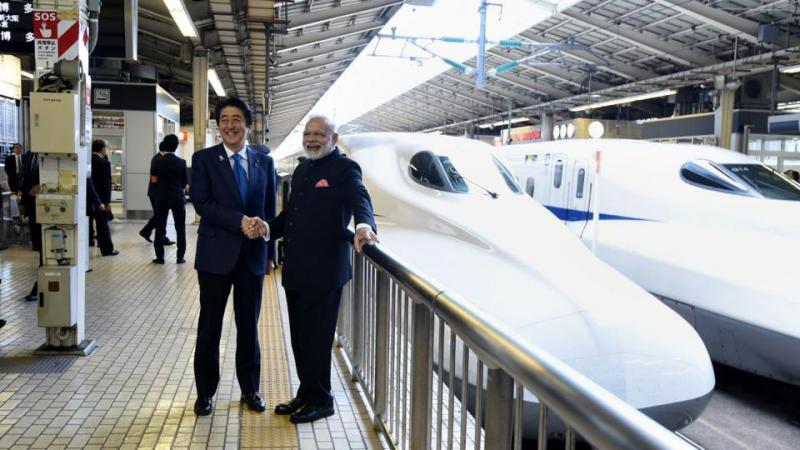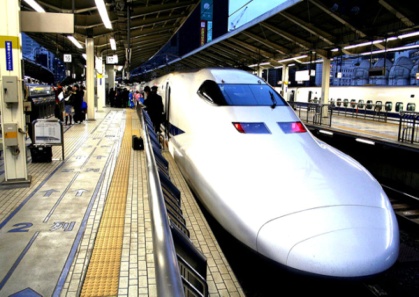
FIRST FULLY ELECTRIFIED BULLET TRAIN IN TIBET OF CHINA
CHINA'S FIRST FULLY ELECTRIFIED BULLET TRAIN IN TIBET

China on June 25, 2021, operationalized its first fully electrified bullet train in the remote Himalayan region of Tibet, connecting the provincial capital Lhasa and Nyingchi, which is a strategically located Tibetan border town close to Arunachal Pradesh. The 435.5 km Lhasa-Nyingchi section of the Sichuan-Tibet Railway has been inaugurated by the country ahead of the centenary celebrations of the Ruling Communist Party of China (CPC) on July 1, 2021. According to the state-run Xinhua news agency, the first electrified railway in Tibet Autonomous Region opened on the morning of June 25, linking Lhasa with Nyingchi as ‘Fuxing’ bullet trains enter the official operation on the plateau region.
KEY HIGHLIGHTS RELATED TO INAUGURATION
The Sichuan-Tibet Railway by China will be the second railway into Tibet after the Qinghai-Tibet Railway. The train will go through the Southeast of the Qinghai-Tibet Plateau, which is one of the world’s most geologically active areas. The Sichuan-Tibet Railway will start from Chengdu, the capital of Sichuan Province. It will travel through Ya’an and will enter Tibet via Qamdo. The rail will shorten the journey from Chengdu to Lhasa from 48 hours to 13 hours.
CHINA'S BULLET TRAIN NEAR INDIAN BORDER
Nyingchi is the prefecture-level city of Medog which is adjacent to the Arunachal Pradesh border in India. China has claimed Arunachal Pradesh as part of South Tibet, which has always been firmly rejected by India. The border dispute between India and China covers the 3,488 km long Line of Actual Control (LAC). The Director of the Research Department at the National Strategy Institute at Tsinghua University, Qian Feng had earlier stated that if a scenario of crisis happens between India and China at the border, the railway will provide a great convenience for China’s delivery of strategic materials.
The President of China, Xi Jinping, in November 2020 had instructed the officials to speed up the construction of the new railway project, connecting Sichuan Province and Nyingchi in Tibet. He stated that the new railway line will play a key role in safeguarding border stability.
RELATED FACT: BULLET TRAIN IN INDIA

In September 2017, Prime Minister Narendra Modi and his Japanese counterpart Shinzo Abe laid the foundation stone of the ambitious bullet train project – connecting Mumbai with Ahmedabad. There are arguments for and against adopting bullet trains in India.
The Shinkansen high-speed trains of Japan are colloquially called as bullet trains for their appearance and speed. It is a term generally used to describe a high-speed train of speeds above 250 kmph.
FIRST INDIAN BULLET TRAIN PROJECT IN INDIA
India’s first bullet train will run in the Mumbai and Ahmedabad high-speed rail corridor, whose construction began in September 2017. It is a 508 km long high-speed rail corridor building with the help of Japan. The train will run at a speed of 320kmph and is expected to be completed by 2022. The 2009–2010 Rail Budget of India introduced the Mumbai–Ahmedabad corridor and 5 other high-speed rail corridors for a feasibility study.
- Finance and Technology: India currently does not have the indigenous high-speed rail technology. The technology is provided by Japan and also 81% of the project cost is financed by Japan at an interest of 0.01% for 50 yrs.
- Comparison of costs: According to an analysis done by the World Bank regarding the costs of High-Speed Rail (HSR) projects in different countries, rail infrastructure accounts for 82% of the total cost. The cost of the Mumbai-Ahmedabad HSR project is nearly $27.44 million per km compared to the $17-21 million per km of China. China is not dependant on the Shinkansen technology and although a late entrant, the HSR projects of China are cheaper than those of Japan. In 2015, China has won a project in Indonesia against Japan for its cost competitiveness. The loan and interest rate by Japan which seems quite tempting at the first look is not actually so. The Japanese Yen is projected to appreciate against the Indian Rupee over the period questioning the viability of the loan and the project on the whole.
POSITIVES OF THE PROJECT
- Convenience: Having an alternative mode of transport will decongest the roads. Also, the speed of bullet trains will save time and boost the businesses in large cities where time is money.
- The interconnectedness between the towns and cities would reduce the hassle of commuting thereby helping in reducing the migration.
- Safety: Safety has been one of the major concerns of Indian Railways. The record of bullet trains in the field of safety has been impeccable. The Shinkansen trains of Japan started in 1964 report no fatalities till date.
- Environment-friendly: In today’s global environmental scenario, any step which checks the pollution is welcome. The emissions of CO2 per passenger km from speed rails is way less compared to that of automobiles and aeroplanes. It emits an eighth and a fifth of emissions respectively.
- Economic growth: It will help in the infrastructure development thereby spurring the economic growth and creating huge employment opportunities.
NEGATIVES OF THE PROJECT
- Costs: The Mumbai- Ahmedabad high-speed rail costs around one lakh crore Indian Rupee.
- Considering the cost overruns due to delays and future fluctuations of inflation, it may further get increased.
- High fares: It is estimated that the fares may range in between Rs. 4000 to Rs 5000 to make the running of trains economically viable. Such fares would be affordable only by the rich who might prefer air travel considering the lesser margin of fares between them. However, most of the travel by trains in India is done by the poorer sections.
- Land acquisition: It might act as another obstacle delaying the project and also causing large-scale displacement of people.
ARGUMENTS AGAINST BULLET TRAINS IN INDIA

The Indian Railways is in a worrying state.There is a need to strengthen the present infrastructure of the railways. The recent number of increasing rail accidents and the Elphinstone road station stampede further strengthens this case. The recent report by the Standing committee on Railways headed by Sudip Bandopadhyay said that in 2014-15, about 40% of the accidents occurred at Unmanned Level Crossings and in 2015-16, about 28%. The committee also recommended a complete shift to LHB coaches to minimize the loss of lives in case of derailments. Thus, the argument is, instead of strengthening and upgrading the current infrastructure keeping in mind the safety of millions of passengers, why invest in a project catered to the well-off sections.
There is no denying the fact that safety considerations are to be kept in mind and accorded high priority. However, comparing these two investments is not right. These should not be considered as alternative choices. Investments should be made for renovation and up gradation as well as in the bullet trains project.













0 Comment